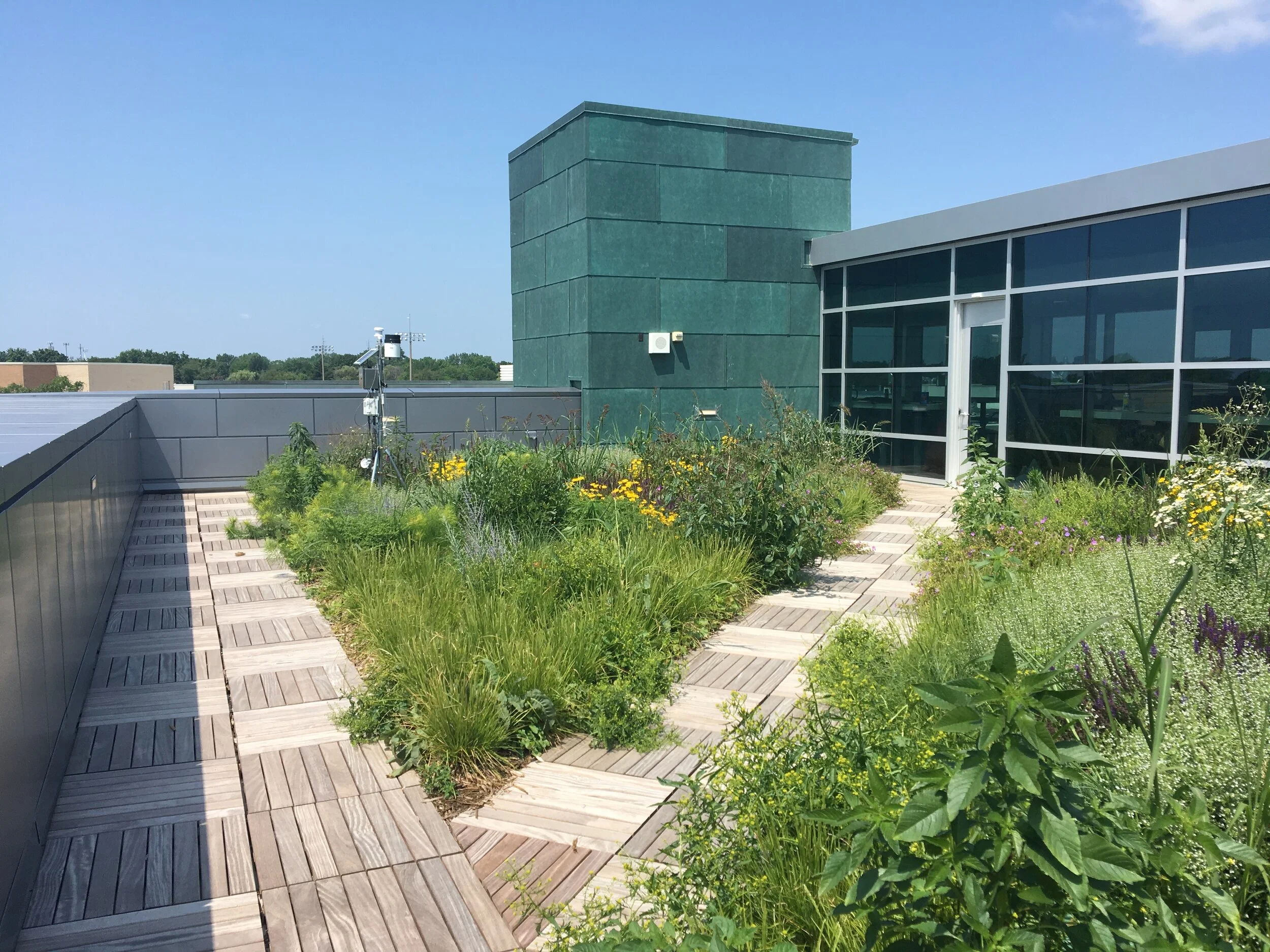How the Living Architecture Performance Tool Can Make Green Roofs and Walls Part of a Climate Strategy
Advertisement
Living architecture offers immense promise as a part of a climate strategy, with green roofs and walls offering the ability to sequester carbon and reduce building and indirect emissions (helping mitigate against climate change), while managing stormwater from extreme rain events, reducing the urban heat island and increasing biodiversity (helping cities adapt to climate change). In fact, Project Drawdown, a catalog of measurable and actionable climate solutions, lists Green and Cool Roofs as one of many potential solutions to climate change.
LAPT Platinum: East Building Addition, Adlai E. Stevenson High School, Linconshire, IL. Photo Courtesy Wight and Company, Omni Ecosystems, and Nedlaw Living Walls
However, not all green roofs and walls are created equal - the Green Infrastructure Foundation has developed the Living Architecture Performance Tool (LAPT) to certify that green roofs and walls are designed to achieve certain measurable and replicable performance benefits. By mandating the use of design, construction, and maintenance best practices, we can help unlock the ability of green roofs and walls as part of a climate solution.
The LAPT has a wide range of potential audiences and uses:
Designers and building owners can use it as a best practice tool or design guideline to optimize the breadth and depth of green roof and wall benefits. By demonstrating the linkages between benefits and encouraging holistic thinking, it is possible to obtain many additional benefits without significantly increasing cost or difficulty of many projects.
Policy makers can use the LAPT as a decision-support tool to optimize incentives, mandates, or grant programs - ensuring that policies that promote green roofs and walls actually achieve the intended performance benefits.
Manufacturers of green roof systems or other accessories can use the LAPT as a guide to design products that use more sustainable materials and that achieve higher levels of performance.
Advertisement
LAPT Gold: Carroll Rooftop Farm, Chicago, IL. Photo Courtesy Omni Ecosystems
The LAPT framework contains 30 credits across 8 performance areas. Several of these credits, if maximized, can provide climate mitigation and adaptation benefits, including:
The 8 performance areas of the Living Architecture Performance Tool
Water
Stormwater Quantity and Quality Management - encourages living architecture which maximizes stormwater retention capabilities, which can help manage rain from extreme weather conditions caused by climate change
Irrigation - encourages climate-appropriate reductions in water use as well as the use of non-potable and recycled water
Water Balance - encourages using green roofs and walls to achieve overall site water balance as part of a water model
Energy
Envelope Thermal Moderation - encourages the use of a building energy model to identify and optimize for green roof and wall benefits, reducing energy consumption and resulting emissions
Heat Island Reduction - encourages greater roof and wall surface coverage to encourage city-scale cooling
Renewable Energy Integration - encourages the integration of solar PV panels and green roofs to achieve synergies and reduce competition for roof space
HVAC Integration - encourages the integration of living architecture with the HVAC system to reduce temperature of intake air and/or to treat air as part of a biofilter
Habitat and Biodiversity
Maximize Biomass - encourages greater plant biomass on the roof, which acts as a carbon store
Health and Well-Being
Food Production - encourages on-site food production, which can reduce food transportation distances and encourage sustainable urban agriculture
Air Quality Improvements - encourages the use of particulate-trapping plants or HVAC-integrated living walls, which can ameliorate the impacts of poor air quality that increased urban temperatures will likely bring
Materials and Construction
Sustainable Materials - encourages the use of materials which are recycled, plant-based, local, and free of harmful chemicals, which reduces the use of unsustainable materials and those derived from petrochemicals
Advertisement
LAPT Silver: Harvard Business School’s McArthur McCollum Building. Photo courtesy Recover Green Roofs.
The magic of green roofs and walls is that they provide an unparalleled array of benefits. The LAPT helps to optimize these benefits to achieve the maximum potential impact from investments made in living architecture. Green roofs and walls designed using the LAPT as a guide will not only be climate-resilient, but will also provide a broad range of benefits to building owners and occupants, communities, regions, and the planet.
GIF is seeking interested designers, building owners, and other professionals to submit projects for certification under v.1 of the LAPT. Certification costs between $1,500 and $2,500 per project, depending on size - significantly lower than certification in comparable programs. For more information on the certification process and benefits, and cost, visit greeninfrastructurefoundation.org/lapt or contact the author below.
Rohan Lilauwala, GRP, is the Program Manager at the Green Infrastructure Foundation. Rohan has spent the past several years working on breaking down barriers to the widespread use of living green infrastructure across North America, focusing on on green infrastructure performance, costs, and benefits. He is the driving force behind the Living Architecture Performance Tool green roof and wall rating system, and his work has helped lead to improvements to the Toronto Eco-Roof Incentive Program and the passage of Denver's citizen-led Green Roof Initiative. Email Rohan at rlilauwala@greenroofs.org








